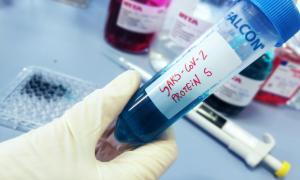The vaccine candidate of IRTA, IrsiCaixa, BSC and Grifols is one of the world initiatives recognized by the WHO

The vaccine proposal against COVID-19 investigated by the consortium has been included into the WHO portal as one of the 142 vaccine initiatives worldwide, 17 of them in clinical phase and the other 132 in preclinical phase.
Since the beginning of the pandemic, the World Health Organization (WHO) Blueprint R&D team has brought together all the initiatives of vaccine candidates from different research centers and companies around the world, which can be consulted in the document Draft landscape of COVID-19 candidate vaccines. At the end of June, the document included the vaccine candidate presented by the consortium formed by the Animal Health Research Center (CReSA) of the Institute of Agrifood Research and Technology (IRTA), the IrsiCaixa AIDS Research Institute, and the Barcelona Supercomputing Center (BSC-CNS), with the support of Grifols. The consortium's strategy is to generate the vaccine using VLPs (virus-like particles), which have the same structure as a virus but without the potential of being infective. Researchers are designing these VLPs using the protein S of the SARS-CoV-2 on its surface.
The recognition of the consortium's proposal by the WHO is crucial because it is one of the 5 vaccine proposals that are being carried out in Spain and this places the consortium on the world map of all existing initiatives.
Four out of five effective and safe products do not reach the market
Researchers point out that it is essential that there are several parallel initiatives worldwide to find a vaccine, as most are unlikely to reach the market or even the clinical stages. The reason is usually the lack of evidence of effectiveness or safety in humans. Given the global experience with other vaccines, four out of five products that meet the requirements for efficacy and safety in the preclinical, laboratory and animal phases do not reach the market. On the other hand, it is not possible to know how many of the vaccines can be produced and used extensively by the entire population that needs it. Therefore, it is emphasized that the more successful initiatives there are, the more likely it is to achieve one that reaches the entire world population quickly enough.
In fact, of all the research presented to the WHO, the most advanced is the vaccine proposed by Oxford University in conjunction with AstraZeneca Laboratories being now in the clinical phase III. Another vaccine that is already being tested in humans is in China by the company CanSino. However, the scientific community warns that having a vaccine on the market by the end of 2020 will be difficult and most likely to be developed during 2021.